Microstructure, Texture, and Mechanical Properties of Friction Stir Spot-Welded AA5052-H32: Influence of Tool Rotation Rate
Abstract
1. Introduction
2. Experiments and Procedures
2.1. Base Material
2.2. FSSW Experiments
2.3. Spot-Welded Joints Characterization
3. Results and Discussion
3.1. Joint Appearance
3.2. Heat Input Energy and Cross-Section Macrographs of the Spot-Welded Joints
3.3. Grain Structure
3.4. Crystallographic Texture
3.5. Hardness Evaluation
3.6. Tensile Test Results and Evaluation of Fracture Surfaces
4. Conclusions
- In comparison to the AA5052-H32 BM, all the FSSWed AA5052-H32 lap joints showed an improvement in the hardness of the SZ and TMAZ. Moreover, the SZ displayed higher values of hardness than those observed for the TMAZ and HAZ. In addition, the hardness of the weld zone decreases with increasing rotation speed from 500 to 1000 rpm.
- Compared to the AA5052-H32 BM grain size (40 µm), there was significant grain refining in the SZ of the produced FSSW joints. For the FSSWed joints processed at 1500, 1000, and 500 rpm, the grain size values in the stir zones were 11, 9, and 4 µm, respectively. The grain size decreased with decreasing heat input.
- The texture is mainly dominated by B/-B simple shear texture components with little effect of the rotation rate either on the texture components or the intensity of the texture.
- The spot-welded joint produced at 500 rpm and 2 s showed the highest SZ hardness of 102.3 ± 3 HV0.5 and tensile–shear load value of 4330 ± 30 N among the produced joints.
- When compared to the AA5052-H32 BM, the fracture surfaces on the three welds at the lower sheets showed typical ductile characteristics in the form of small equiaxed dimples, indicating grain refinement due to dynamic recrystallization through the SZ during the FSSW process.
- Finally, this work opens a fruitful field for researchers to work towards manufacturing spot welding joints at a low tool rotation speed equal to or less than 500 rpm and a short time of 2 s for different aluminum alloys, which represents a significant industrial goal to reduce energy use and production time.
Author Contributions
Funding
Institutional Review Board Statement
Informed Consent Statement
Data Availability Statement
Acknowledgments
Conflicts of Interest
References
- Benedyk, J.C. Aluminum Alloys for Lightweight Automotive Structures; Woodhead Publishing Limited: Soston, UK, 2010; ISBN 9781845694630. [Google Scholar]
- El-Sayed Seleman, M.M.; Ataya, S.; Ahmed, M.M.Z.; Hassan, A.M.M.; Latief, F.H.; Hajlaoui, K.; El-Nikhaily, A.E.; Habba, M.I.A. The Additive Manufacturing of Aluminum Matrix Nano Al2O3 Composites Produced via Friction Stir Deposition Using Different Initial Material Conditions. Materials 2022, 15, 2926. [Google Scholar] [CrossRef] [PubMed]
- Mohamed, A.M.A.; Hasan, H.; Seleman, M.M.E.-S.; Ahmed, E.; Saleh, S.M.; El-Maghraby, R.M. Performance of Sprayed PVDF-Al2O3 Composite Coating for Industrial and Civil Applications. Materials 2021, 14, 6358. [Google Scholar] [CrossRef] [PubMed]
- Yamada, H.; Kami, T.; Mori, R.; Kudo, T.; Okada, M. Strain Rate Dependence of Material Strength in Aa5xxx Series Aluminum Alloys and Evaluation of Their Constitutive Equation. Metals 2018, 8, 576. [Google Scholar] [CrossRef]
- Li, Y.; Li, L.; Nie, J.; Cao, Y.; Zhao, Y.; Zhub, Y. Microstructural Evolution and Mechanical Properties of a 5052 Al Alloy with Gradient Structures. J. Mater. Res. 2017, 32, 4443–4451. [Google Scholar] [CrossRef]
- Ozturk, F.; Toros, S.; Kilic, S. Evaluation of Tensile Properties of 5052 Type Aluminum-Magnesium Alloy at Warm Temperatures. Arch. Mater. Sci. Eng. 2008, 34, 95–98. [Google Scholar]
- Sen, R.; Choudhury, S.P.; Kumar, R.; Panda, A. A Comprehensive Review on the Feasibility Study of Metal Inert Gas Welding. Mater. Today Proc. 2018, 5, 17792–17801. [Google Scholar] [CrossRef]
- Ye, Z.; Huang, J.; Gao, W.; Zhang, Y.; Cheng, Z.; Chen, S.; Yang, J. Microstructure and Mechanical Properties of 5052 Aluminum Alloy/Mild Steel Butt Joint Achieved by MIG-TIG Double-Sided Arc Welding-Brazing. Mater. Des. 2017, 123, 69–79. [Google Scholar] [CrossRef]
- Shanavas, S.; Raja Dhas, J.E. Weldability of AA 5052 H32 Aluminium Alloy by TIG Welding and FSW—A Comparative Study. In Proceedings of the 1st International Conference on Recent Advances in Aerospace Engineering (ICRAAE-2017), Coimbatore, India, 3–4 March 2017; Volume 247. [Google Scholar] [CrossRef]
- Sarmast, A.; Serajzadeh, S. The Influence of Welding Polarity on Mechanical Properties, Microstructure and Residual Stresses of Gas Tungsten Arc Welded AA5052. Int. J. Adv. Manuf. Technol. 2019, 105, 3397–3409. [Google Scholar] [CrossRef]
- Sekhar, S.R.; Chittaranjandas, V.; Govardhan, D.; Karthikeyan, R. Effect of Tool Rotational Speed on Friction Stir Spot Welded AA5052-H38 Aluminum Alloy. Mater. Today Proc. 2018, 5, 5536–5543. [Google Scholar] [CrossRef]
- Luo, Z.; Ao, S.; Chao, Y.J.; Cui, X.; Li, Y.; Lin, Y. Application of Pre-Heating to Improve the Consistency and Quality in AA5052 Resistance Spot Welding. J. Mater. Eng. Perform. 2015, 24, 3881–3891. [Google Scholar] [CrossRef]
- Xiao, R.; Zhang, X. Problems and Issues in Laser Beam Welding of Aluminum-Lithium Alloys. J. Manuf. Process. 2014, 16, 166–175. [Google Scholar] [CrossRef]
- Doshi, S.J.; Gohil, A.V.; Mehta, N.; Vaghasiya, S. Challenges in Fusion Welding of Al Alloy for Body in White. Mater. Today Proc. 2018, 5, 6370–6375. [Google Scholar] [CrossRef]
- Mei, Y.; Liu, Y.; Liu, C.; Li, C.; Yu, L.; Guo, Q.; Li, H. Effect of Base Metal and Welding Speed on Fusion Zone Microstructure and HAZ Hot-Cracking of Electron-Beam Welded Inconel 718. Mater. Des. 2016, 89, 964–977. [Google Scholar] [CrossRef]
- Ahmed, M.M.Z.; El-Sayed Seleman, M.M.; Fydrych, D.; Çam, G. Friction Stir Welding of Aluminum in the Aerospace Industry: The Current Progress and State-of-the-Art Review. Materials 2023, 16, 2971. [Google Scholar] [CrossRef]
- Ahmed, M.M.Z.; El-Sayed Seleman, M.M.; Eid, R.G.; Zawrah, M.F. Production of AA1050/Silica Fume Com-posite by Bobbin Tool-Friction Stir Processing: Microstructure, Composition and Mechanical Properties. CIRP J. Manuf. Sci. Technol. 2022, 38, 801–812. [Google Scholar] [CrossRef]
- Ahmed, M.M.Z.; El-Sayed Seleman, M.M.; Ahmed, E.; Reyad, H.A.; Alsaleh, N.A.; Albaijan, I. A Novel Friction Stir Deposition Technique to Refill Keyhole of Friction Stir Spot Welded AA6082-T6 Dissimilar Joints of Different Sheet Thicknesses. Materials 2022, 15, 6799. [Google Scholar] [CrossRef]
- Çam, G.; Javaheri, V.; Heidarzadeh, A. Advances in FSW and FSSW of Dissimilar Al-Alloy Plates. J. Adhes Sci. Technol. 2023, 37, 162–194. [Google Scholar] [CrossRef]
- Bozkurt, Y.; Salman, S.; Çam, G. Effect of Welding Parameters on Lap Shear Tensile Properties of Dissimilar Friction Stir Spot Welded Aa 5754-H22/2024-T3 Joints. Sci. Technol. Weld. Join. 2013, 18, 337–345. [Google Scholar] [CrossRef]
- Venukumar, S.; Baby, B.; Muthukumaran, S.; Kailas, S.V. Microstructural and Mechanical Properties of Walking Friction Stir Spot Welded AA 6061-T6 Sheets. Procedia Mater. Sci. 2014, 6, 656–665. [Google Scholar] [CrossRef]
- Çam, G.; Ipekoğlu, G.; Tarık Serindağ, H. Effects of Use of Higher Strength Interlayer and External Cooling on Properties of Friction Stir Welded AA6061-T6 Joints. Sci. Technol. Weld. Join. 2014, 19, 715–720. [Google Scholar] [CrossRef]
- Freeney, T.A.; Sharma, S.R.; Mishra, R.S. Effect of Welding Parameters on Properties of 5052 Al Friction Stir Spot Welds. SAE Technol. Pap. 2006. [Google Scholar] [CrossRef]
- Tozaki, Y.; Uematsu, Y.; Tokaji, K. Effect of Tool Geometry on Microstructure and Static Strength in Friction Stir Spot Welded Aluminium Alloys. Int. J. Mach. Tools Manuf. 2007, 47, 2230–2236. [Google Scholar] [CrossRef]
- Arul, S.G.; Miller, S.F.; Kruger, G.H.; Pan, T.Y.; Mallick, P.K.; Shih, A.J. Experimental Study of Joint Performance in Spot Friction Welding of 6111-T4 Aluminium Alloy. Sci. Technol. Weld. Join. 2008, 13, 629–637. [Google Scholar] [CrossRef]
- Rana, P.K.; Narayanan, R.G.; Kailas, S.V. Effect of Rotational Speed on Friction Stir Spot Welding of AA5052-H32/HDPE/AA5052-H32 Sandwich Sheets. J. Mater. Process. Technol. 2018, 252, 511–523. [Google Scholar] [CrossRef]
- Tiwan; Ilman, M.N. Kusmono Microstructure and Mechanical Properties of Friction Stir Spot Welded AA5052-H112 Aluminum Alloy. Heliyon 2021, 7, e06009. [Google Scholar] [CrossRef] [PubMed]
- Merzoug, M.; Mazari, M.; Berrahal, L.; Imad, A. Parametric Studies of the Process of Friction Spot Stir Welding of Aluminium 6060-T5 Alloys. Mater. Des. 2010, 31, 3023–3028. [Google Scholar] [CrossRef]
- Rana, P.K.; Narayanan, R.G.; Kailas, S.V. Friction Stir Spot Welding of AA5052-H32/HDPE/AA5052-H32 Sandwich Sheets at Varying Plunge Speeds. Thin-Walled Struct. 2019, 138, 415–429. [Google Scholar] [CrossRef]
- Zhang, Z.; Yang, X.; Zhang, J.; Zhou, G.; Xu, X.; Zou, B. Effect of Welding Parameters on Microstructure and Mechanical Properties of Friction Stir Spot Welded 5052 Aluminum Alloy. Mater. Des. 2011, 32, 4461–4470. [Google Scholar] [CrossRef]
- Lathabai, S.; Painter, M.J.; Cantin, G.M.D.; Tyagi, V.K. Friction Spot Joining of an Extruded Al-Mg-Si Alloy. Scr. Mater. 2006, 55, 899–902. [Google Scholar] [CrossRef]
- Tran, V.X.; Pan, J.; Pan, T. Effects of Processing Time on Strengths and Failure Modes of Dissimilar Spot Friction Welds between Aluminum 5754-O and 7075-T6 Sheets. J. Mater. Process. Technol. 2009, 209, 3724–3739. [Google Scholar] [CrossRef]
- Mahmoud, T.S.; Khalifa, T.A. Microstructural and Mechanical Characteristics of Aluminum Alloy AA5754 Friction Stir Spot Welds. J. Mater. Eng. Perform. 2014, 23, 898–905. [Google Scholar] [CrossRef]
- D’Urso, G.; Giardini, C. Thermo-Mechanical Characterization of Friction Stir Spot Welded AA7050 Sheets by Means of Experimental and FEM Analyses. Materials 2016, 9, 689. [Google Scholar] [CrossRef] [PubMed]
- Ahmed, M.M.Z.; Seleman, M.M.E.S.; Ahmed, E.; Reyad, H.A.; Touileb, K.; Albaijan, I. Friction Stir Spot Welding of Different Thickness Sheets of Aluminum Alloy AA6082-T6. Materials 2022, 15, 2971. [Google Scholar] [CrossRef] [PubMed]
- Song, X.; Ke, L.; Xing, L.; Liu, F.; Huang, C. Effect of Plunge Speeds on Hook Geometries and Mechanical Properties in Friction Stir Spot Welding of A6061-T6 Sheets. Int. J. Adv. Manuf. Technol. 2014, 71, 2003–2010. [Google Scholar] [CrossRef]
- Shen, Z.; Yang, X.; Zhang, Z.; Cui, L.; Yin, Y. Mechanical Properties and Failure Mechanisms of Friction Stir Spot Welds of AA 6061-T4 Sheets. Mater. Des. 2013, 49, 181–191. [Google Scholar] [CrossRef]
- Bozzi, S.; Helbert-Etter, A.L.; Baudin, T.; Klosek, V.; Kerbiguet, J.G.; Criqui, B. Influence of FSSW Parameters on Fracture Mechanisms of 5182 Aluminium Welds. J. Mater. Process. Technol. 2010, 210, 1429–1435. [Google Scholar] [CrossRef]
- Tutar, M.; Aydin, H.; Yuce, C.; Yavuz, N.; Bayram, A. The Optimisation of Process Parameters for Friction Stir Spot-Welded AA3003-H12 Aluminium Alloy Using a Taguchi Orthogonal Array. Mater. Des. 2014, 63, 789–797. [Google Scholar] [CrossRef]
- Paidar, M.; Khodabandeh, A.; Najafi, H.; Rouh-aghdam, A.S. Effects of the Tool Rotational Speed and Shoulder Penetration Depth on Mechanical Properties and Failure Modes of Friction Stir Spot Welds of Aluminum 2024-T3 Sheets. J. Mech. Sci. Technol. 2014, 28, 4893–4898. [Google Scholar] [CrossRef]
- Zhou, L.; Zhang, R.X.; Li, G.H.; Zhou, W.L.; Huang, Y.X.; Song, X.G. Effect of Pin Profile on Microstructure and Mechanical Properties of Friction Stir Spot Welded Al-Cu Dissimilar Metals. J. Manuf. Process. 2018, 36, 1–9. [Google Scholar] [CrossRef]
- Lin, Y.C.; Chen, J.N. Influence of Process Parameters on Friction Stir Spot Welded Aluminum Joints by Various Threaded Tools. J. Mater. Process. Technol. 2015, 225, 347–356. [Google Scholar] [CrossRef]
- Hirasawa, S.; Badarinarayan, H.; Okamoto, K.; Tomimura, T.; Kawanami, T. Analysis of Effect of Tool Geometry on Plastic Flow during Friction Stir Spot Welding Using Particle Method. J. Mater. Process. Technol. 2010, 210, 1455–1463. [Google Scholar] [CrossRef]
- Badarinarayan, H.; Shi, Y.; Li, X.; Okamoto, K. Effect of Tool Geometry on Hook Formation and Static Strength of Friction Stir Spot Welded Aluminum 5754-O Sheets. Int. J. Mach. Tools Manuf. 2009, 49, 814–823. [Google Scholar] [CrossRef]
- Paidar, M.; Khodabandeh, A.; Sarab, M.L.; Taheri, M. Effect of Welding Parameters (Plunge Depths of Shoulder, Pin Geometry, and Tool Rotational Speed) on the Failure Mode and Stir Zone Characteristics of Friction Stir Spot Welded Aluminum 2024-T3 Sheets. J. Mech. Sci. Technol. 2015, 29, 4639–4644. [Google Scholar] [CrossRef]
- Cao, J.Y.; Wang, M.; Kong, L.; Guo, L.J. Hook Formation and Mechanical Properties of Friction Spot Welding in Alloy 6061-T6. J. Mater. Process. Technol. 2016, 230, 254–262. [Google Scholar] [CrossRef]
- Güler, H. The Mechanical Behavior of Friction-Stir Spot Welded Aluminum Alloys. Jom 2014, 66, 2156–2160. [Google Scholar] [CrossRef]
- Suryanarayanan, R.; Sridhar, V.G. Studies on the Influence of Process Parameters in Friction Stir Spot Welded Joints–A Review. Mater. Today Proc. 2020, 37, 2695–2702. [Google Scholar] [CrossRef]
- Pan, T.Y. Friction Stir Spot Welding (FSSW)–A Literature Review, SAE Technical Paper 2007-01-1702; SAE: Warrendale, PA, USA, 16 April 2007. [CrossRef]
- Fratini, L.; Barcellona, A.; Buffa, G.; Palmen, D. Friction Stir Spot Welding of AA6082-T6: Influence of the Most Relevant Process Parameters and Comparison with Classic Mechanical Fastening Techniques. Proc. Inst. Mech. Eng. B J. Eng. Manuf. 2007, 221, 1111–1118. [Google Scholar] [CrossRef]
- Cao, X.; Garnier, C.; Wanjara, P. Tensile Strength of Friction Stir Spot Welded Dissimilar AA5754-to-AZ31B Alloys. In Proceedings of the ASM Proceedings of the International Conference: Trends in Welding Research, Chicago, IL, USA, 4–8 June 2012; pp. 572–579. [Google Scholar]
- Rojikin, S.; Muhayat, N.; Triyono. Effect of Rotation Speed on Mechanical Properties and Microstructure of Friction Stir Spot Welding (FSSW) Al 5052–Steel SS400. In Proceedings of the 2nd Nommensen International Conference on Technology and Engineering, Medan, Indonesia, 19–20 July 2018; Volume 420. [Google Scholar] [CrossRef]
- Ahmed, M.M.Z.; Ahmed, E.; Hamada, A.S.; Khodir, S.A.; El-Sayed Seleman, M.M.; Wynne, B.P. Microstruc-ture and Mechanical Properties Evolution of Friction Stir Spot Welded High-Mn Twinning-Induced Plastici-ty Steel. Mater. Des. 2016, 91, 378–387. [Google Scholar] [CrossRef]
- Ahmed, M.M.Z.; Habba, M.I.A.; El-Sayed Seleman, M.M.; Hajlaoui, K.; Ataya, S.; Latief, F.H.; EL-Nikhaily, A.E. Bobbin Tool Friction Stir Welding of Aluminum Thick Lap Joints: Effect of Process Parameters on Temperature Distribution and Joints’ Properties. Materials 2021, 14, 4585. [Google Scholar] [CrossRef]
- Aydın, H.; Tunçel, O.; Tutar, M.; Bayram, A. Effect of Tool Pin Profile on the Hook Geometry and Mechanical Properties of a Friction Stir Spot Welded Aa6082-T6 Aluminum Alloy. Trans. Can. Soc. Mech. Eng. 2021, 45, 233–248. [Google Scholar] [CrossRef]
- Ataya, S.; Ahmed, M.M.Z.; El-Sayed Seleman, M.M.; Hajlaoui, K.; Latief, F.H.; Soliman, A.M.; Elshaghoul, Y.G.Y.; Habba, M.I.A. Effective Range of FSSW Parameters for High Load-Carrying Capacity of Dissimilar Steel A283M-C/Brass CuZn40 Joints. Materials 2022, 15, 1394. [Google Scholar] [CrossRef] [PubMed]
- Atak, A.; Şık, A.; Özdemir, V. Thermo-Mechanical Modeling of Friction Stir Spot Welding and Numerical Solution With The Finite Element Method. Int. J. Eng. Appl. Sci. 2018, 5, 70–75. [Google Scholar]
- Kumar, R.R.; Kumar, A.; Kumar, S. Effect on Tool Design and Heat Input of Some Welding Parameters in Friction Stir Welded Interstitial Free Steels. Int. J. Eng. Technol. Innov. 2018, 8, 64–75. [Google Scholar]
- Ahmed, M.M.Z.; Abdul-Maksoud, M.A.A.; El-Sayed Seleman, M.M.; Mohamed, A.M.A. Effect of Dwelling Time and Plunge Depth on the Joint Properties of the Dissimilar Friction Stir Spot Welded Aluminum and Steel. J. Eng. Res. 2021, 9, 11367. [Google Scholar] [CrossRef]
- Ahmed, M.M.Z.; Wynne, B.P.; Rainforth, W.M.; Threadgill, P.L. Quantifying Crystallographic Texture in the Probe-Dominated Region of Thick-Section Friction-Stir-Welded Aluminium. Scr. Mater. 2008, 59, 507–510. [Google Scholar] [CrossRef]
- Gera, D.; Fu, B.; Suhuddin, U.F.H.R.; Plaine, A.; Alcantara, N.; dos Santos, J.F.; Klusemann, B. Microstructure, Mechanical and Functional Properties of Refill Friction Stir Spot Welds on Multilayered Aluminum Foils for Battery Application. J. Mater. Res. Technol. 2021, 13, 2272–2286. [Google Scholar] [CrossRef]
- Ahmed, M.M.Z.; Essa, A.R.S.; Ataya, S.; El-Sayed Seleman, M.M.; El-Aty, A.A.; Alzahrani, B.; Touileb, K.; Bakkar, A.; Ponnore, J.J.; Mohamed, A.Y.A. Friction Stir Welding of AA5754-H24: Impact of Tool Pin Eccentricity and Welding Speed on Grain Structure, Crystallographic Texture, and Mechanical Properties. Materials 2023, 16, 2031. [Google Scholar] [CrossRef]
- Fonda, R.W.; Knipling, K.E. Texture Development in Friction Stir Welds. Sci. Technol. Weld. Join. 2011, 16, 288–294. [Google Scholar] [CrossRef]
- Fonda, R.W.; Bingert, J.F. Texture Variations in an Aluminum Friction Stir Weld. Scr. Mater. 2007, 57, 1052–1055. [Google Scholar] [CrossRef]
- Montheillet, F. Axial Stresses and Texture Development Al, Cu AND a-Fe. Acta Metall. 1984, 32, 2077–2089. [Google Scholar] [CrossRef]
- Kwon, Y.J.; Shim, S.B.; Park, D.H. Friction Stir Welding of 5052 Aluminum Alloy Plates. Trans. Nonferrous Met. Soc. China 2009, 19, s23–s27. [Google Scholar] [CrossRef]
- Xu, Z.; Li, Z.; Ji, S.; Zhang, L. Refill Friction Stir Spot Welding of 5083-O Aluminum Alloy. J. Mater. Sci. Technol. 2018, 34, 878–885. [Google Scholar] [CrossRef]
- Silva, B.H.; Zepon, G.; Bolfarini, C.; dos Santos, J.F. Refill Friction Stir Spot Welding of AA6082-T6 Alloy: Hook Defect Formation and Its Influence on the Mechanical Properties and Fracture Behavior. Mater. Sci. Eng. A 2020, 773, 138724. [Google Scholar] [CrossRef]
- Wang, B.; Chen, X.H.; Pan, F.S.; Mao, J.J.; Fang, Y. Effects of Cold Rolling and Heat Treatment on Microstructure and Mechanical Properties of AA 5052 Aluminum Alloy. Trans. Nonferrous Met. Soc. China 2015, 25, 2481–2489. [Google Scholar] [CrossRef]
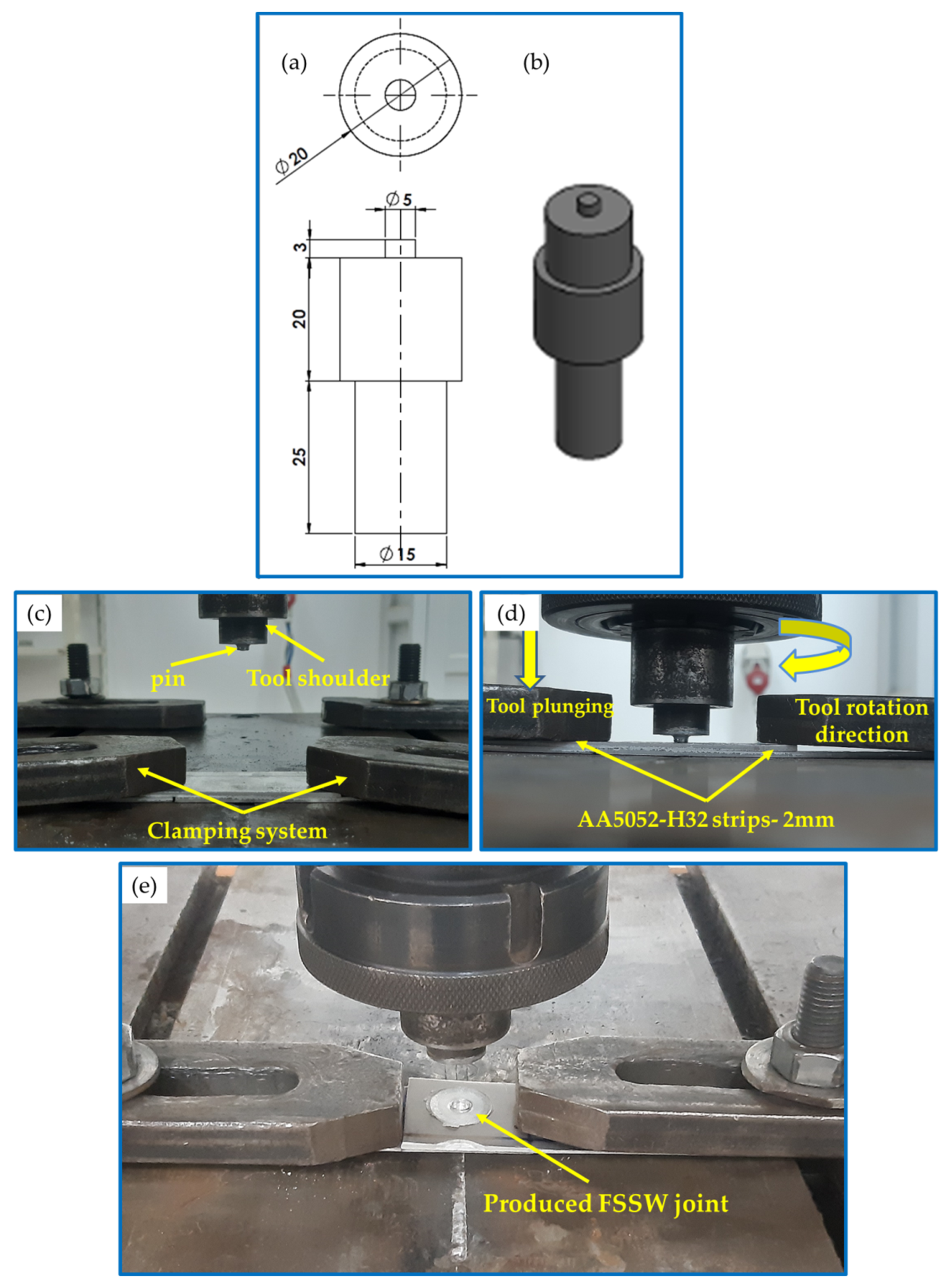

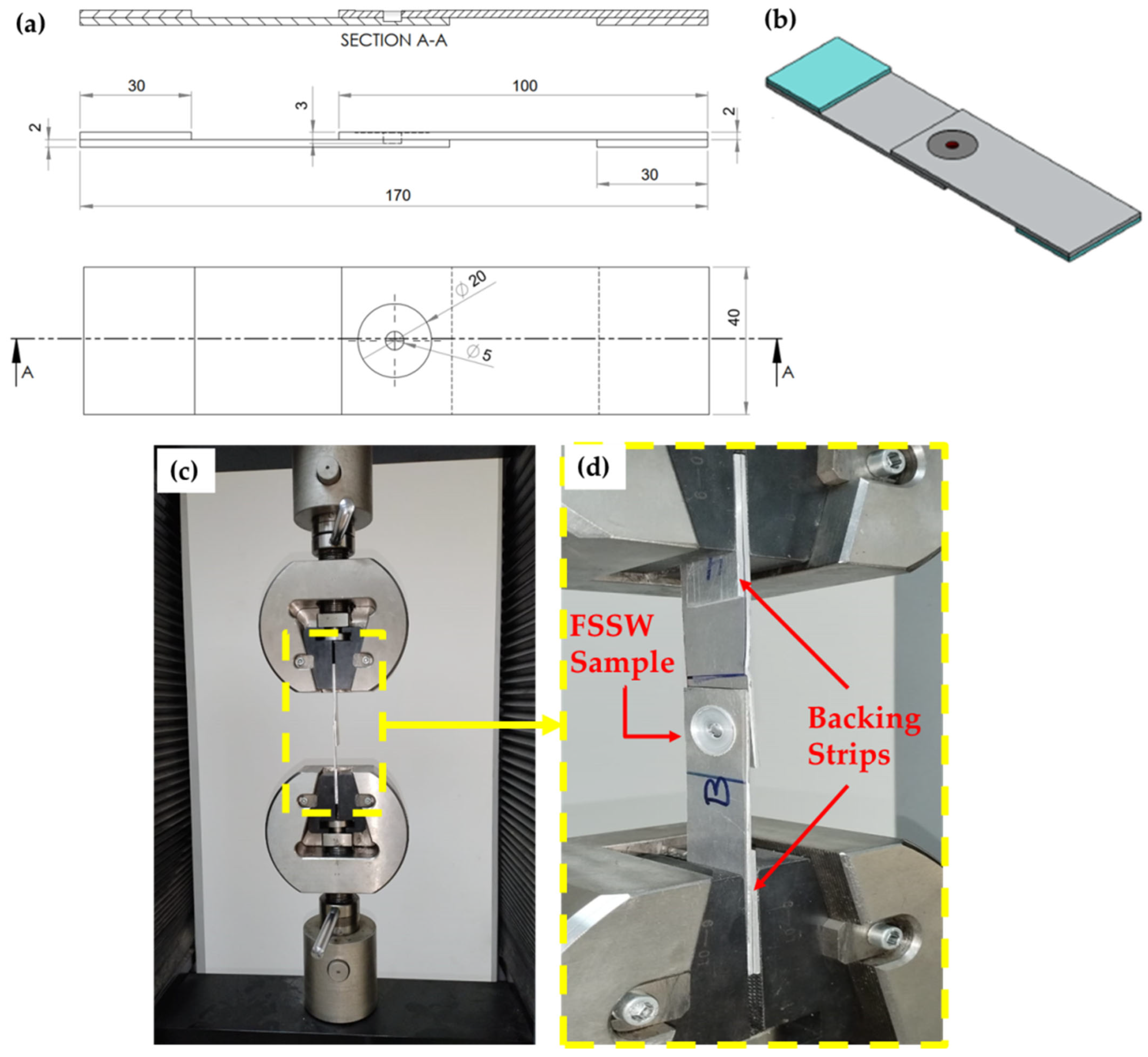
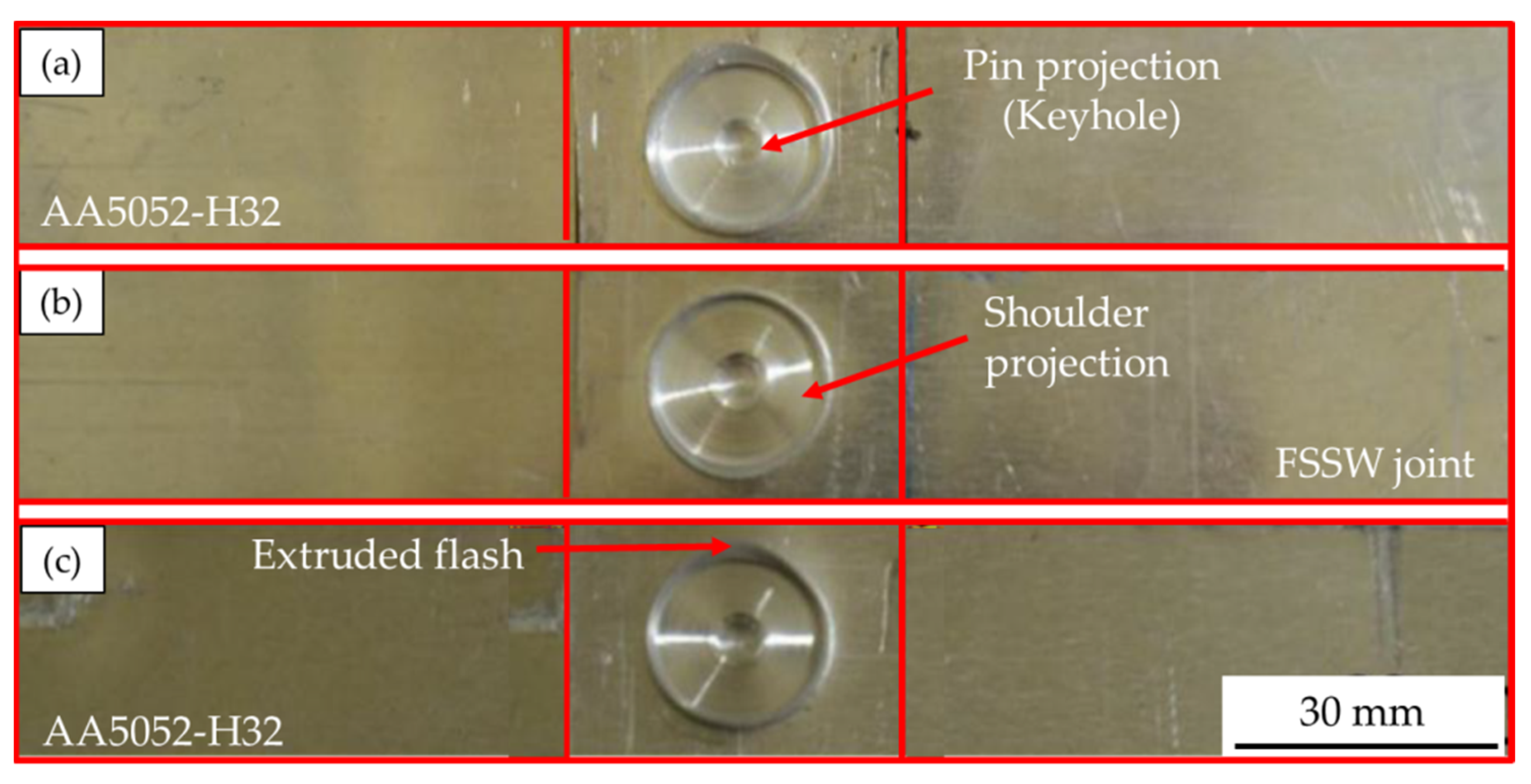
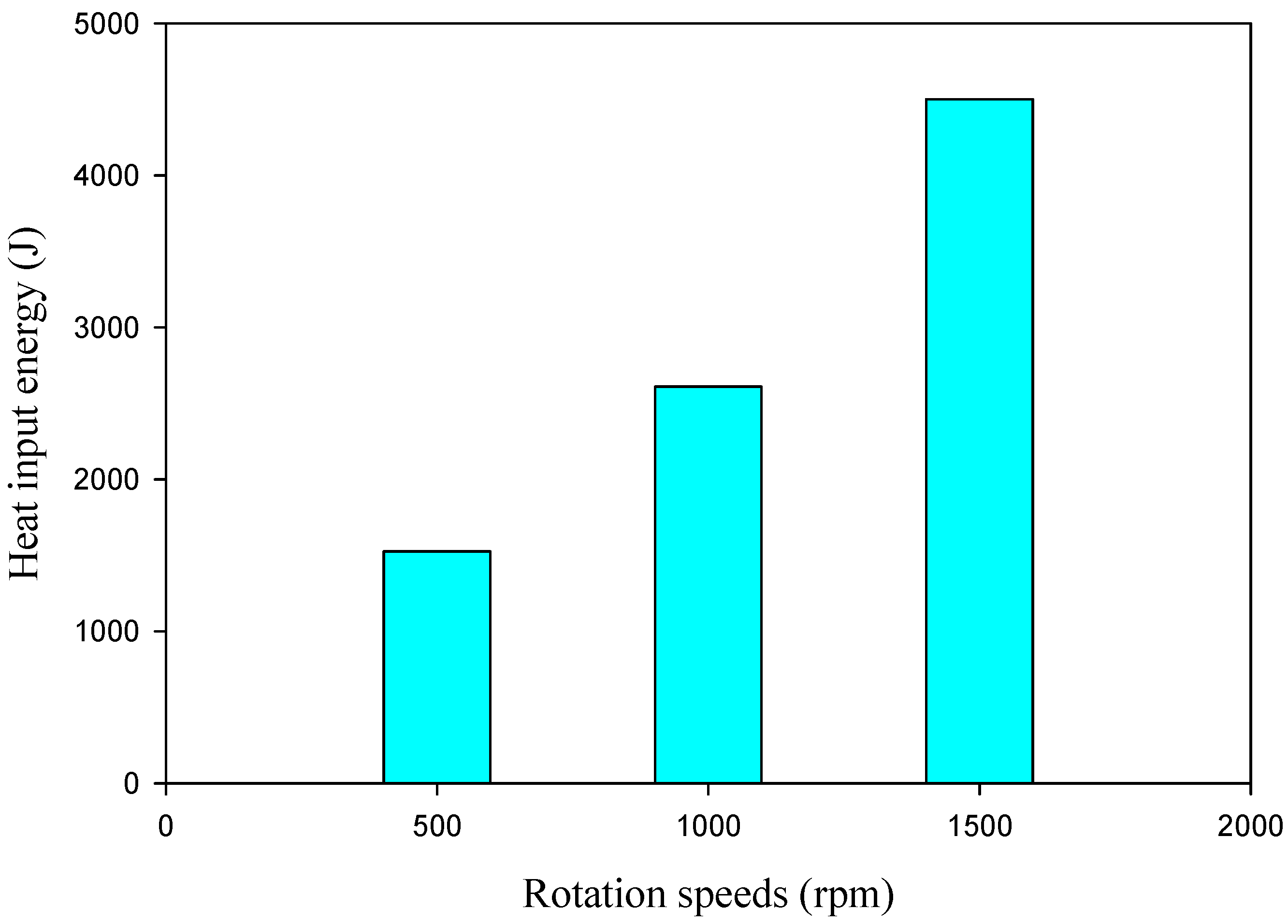
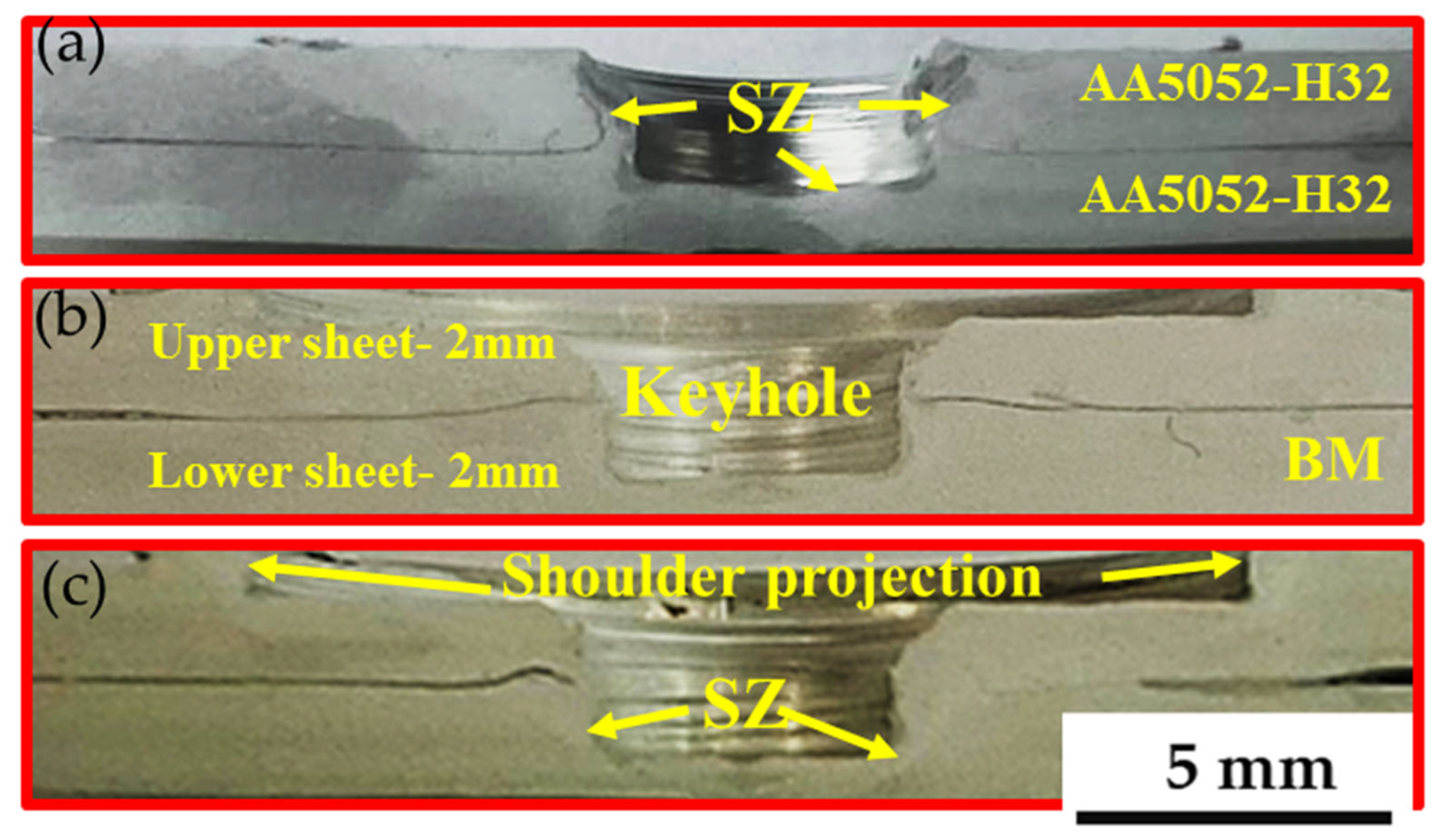
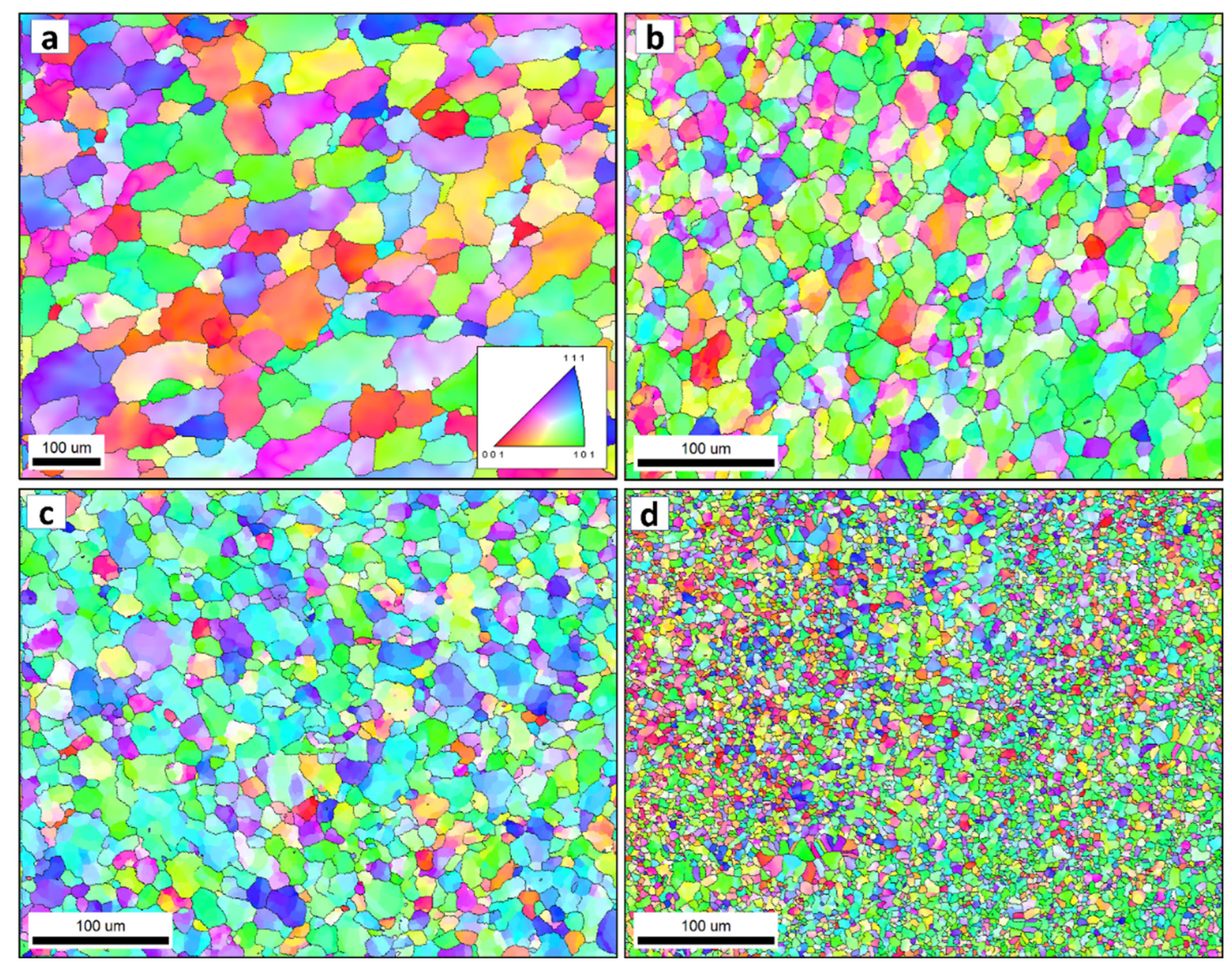

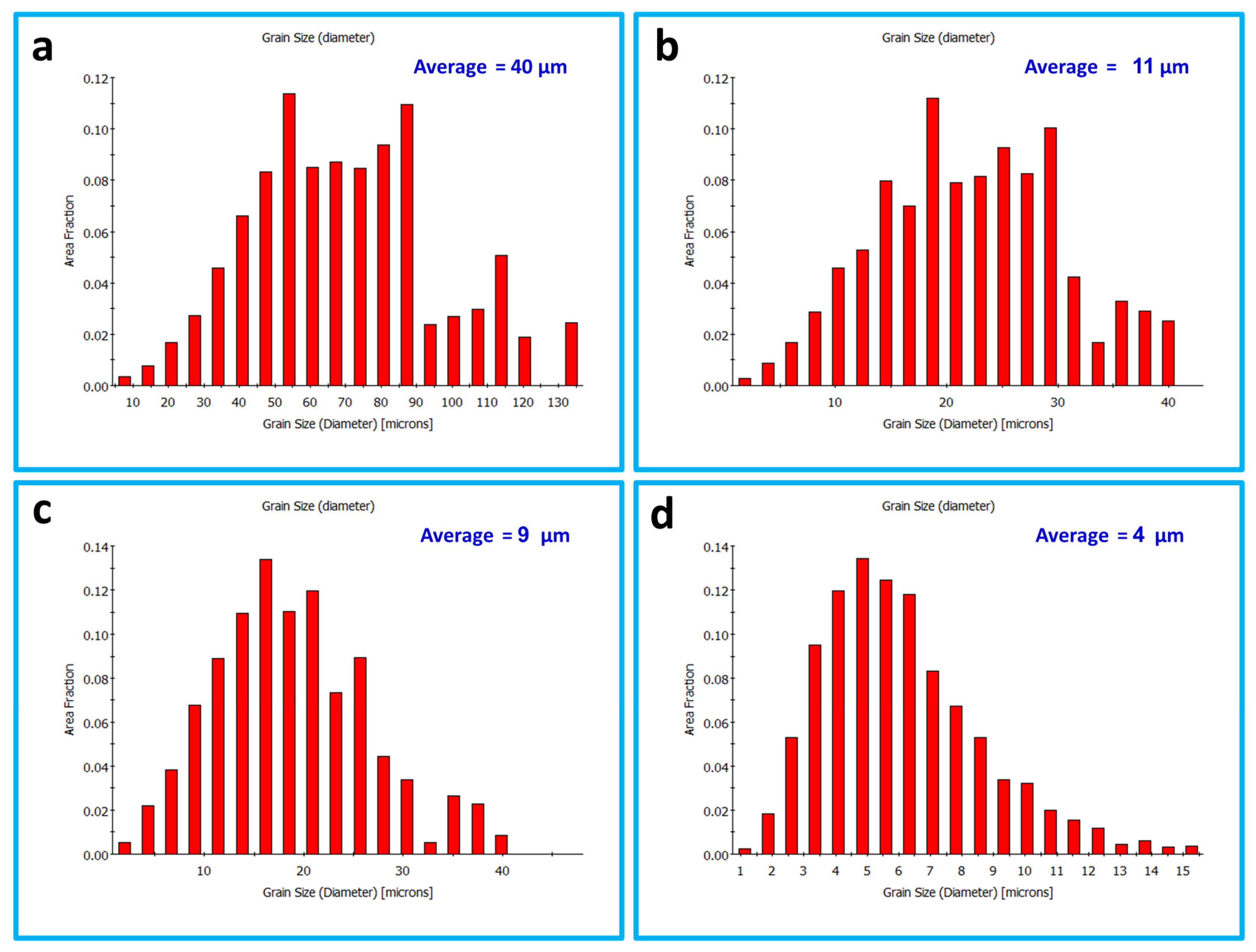
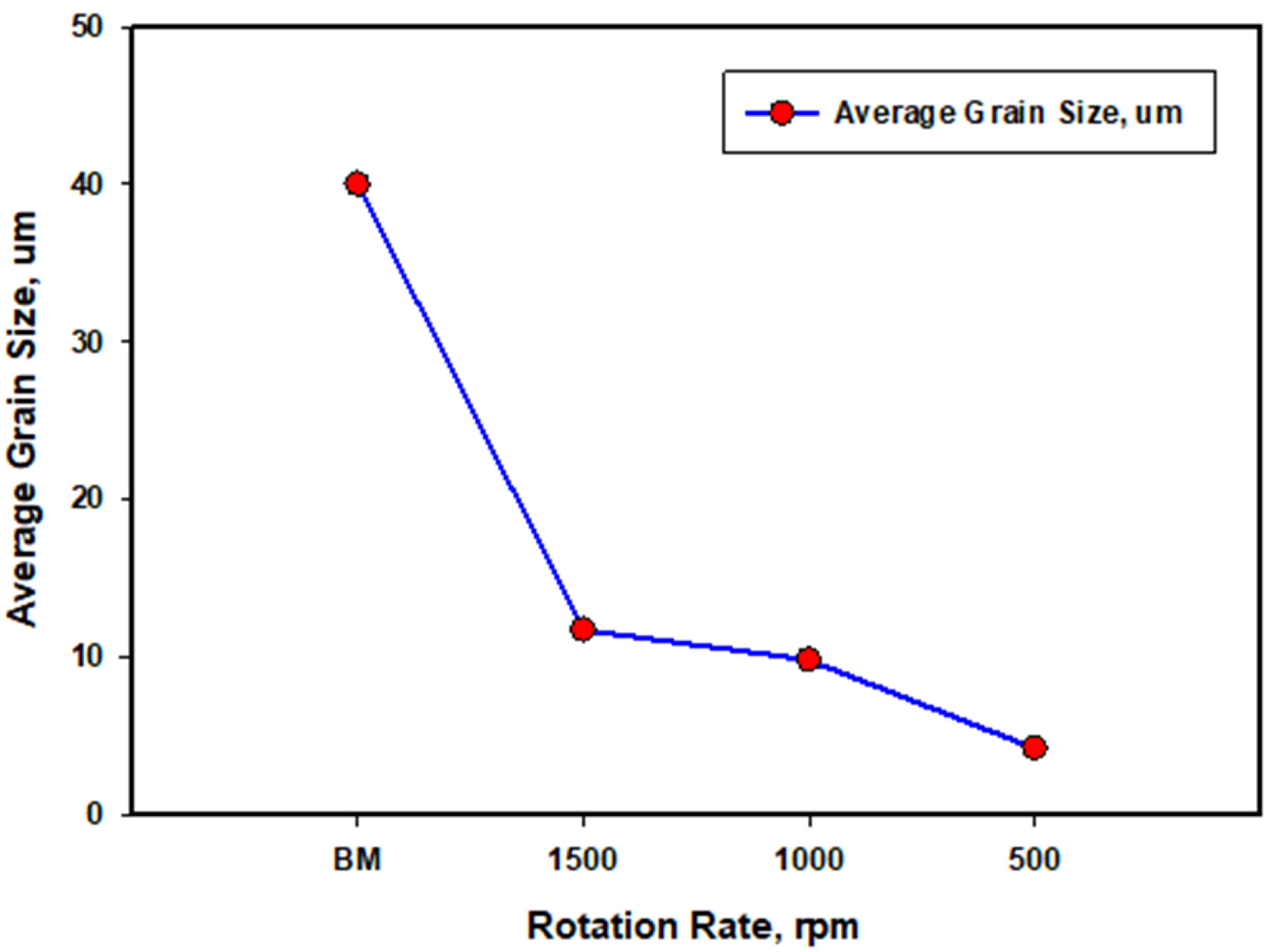
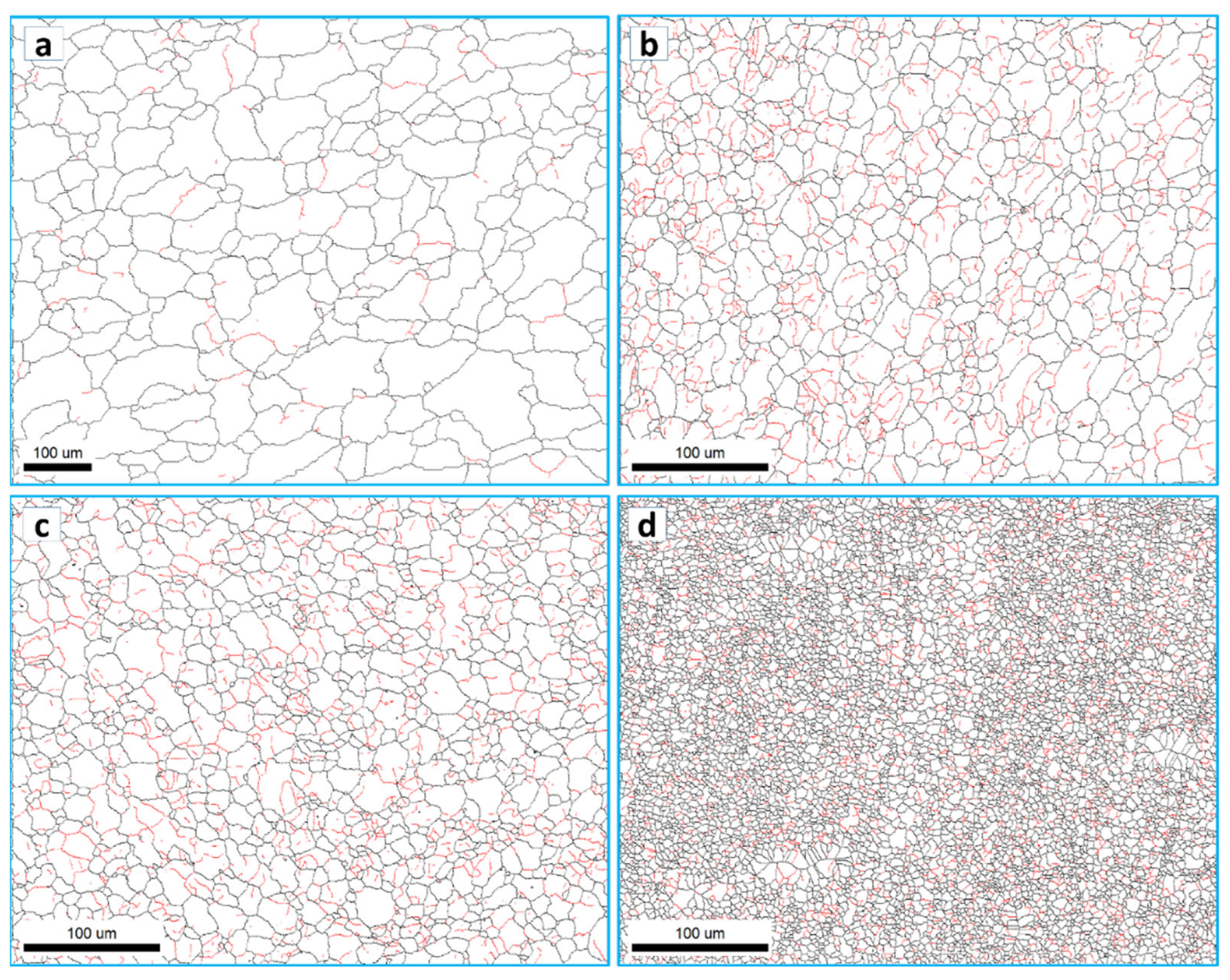
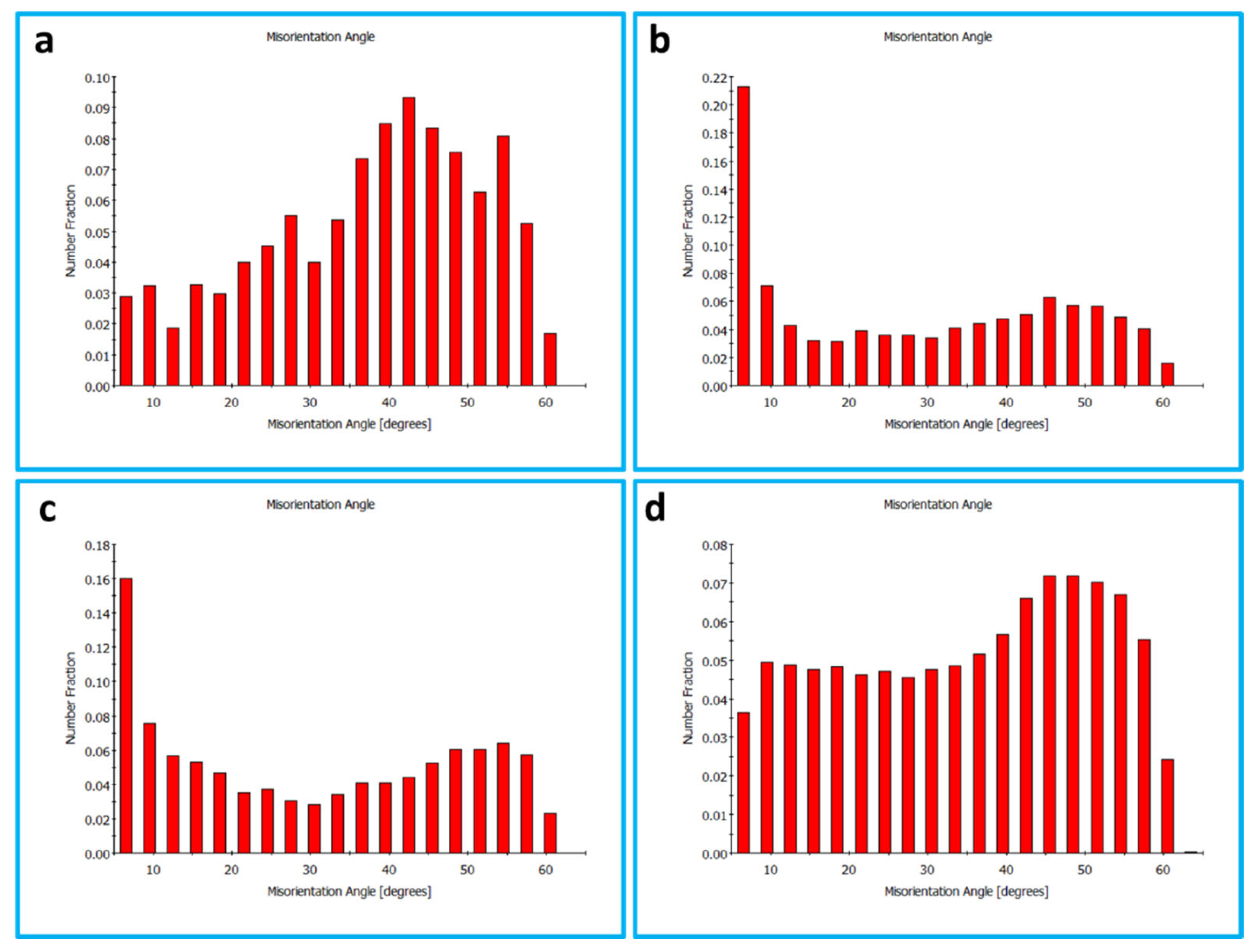
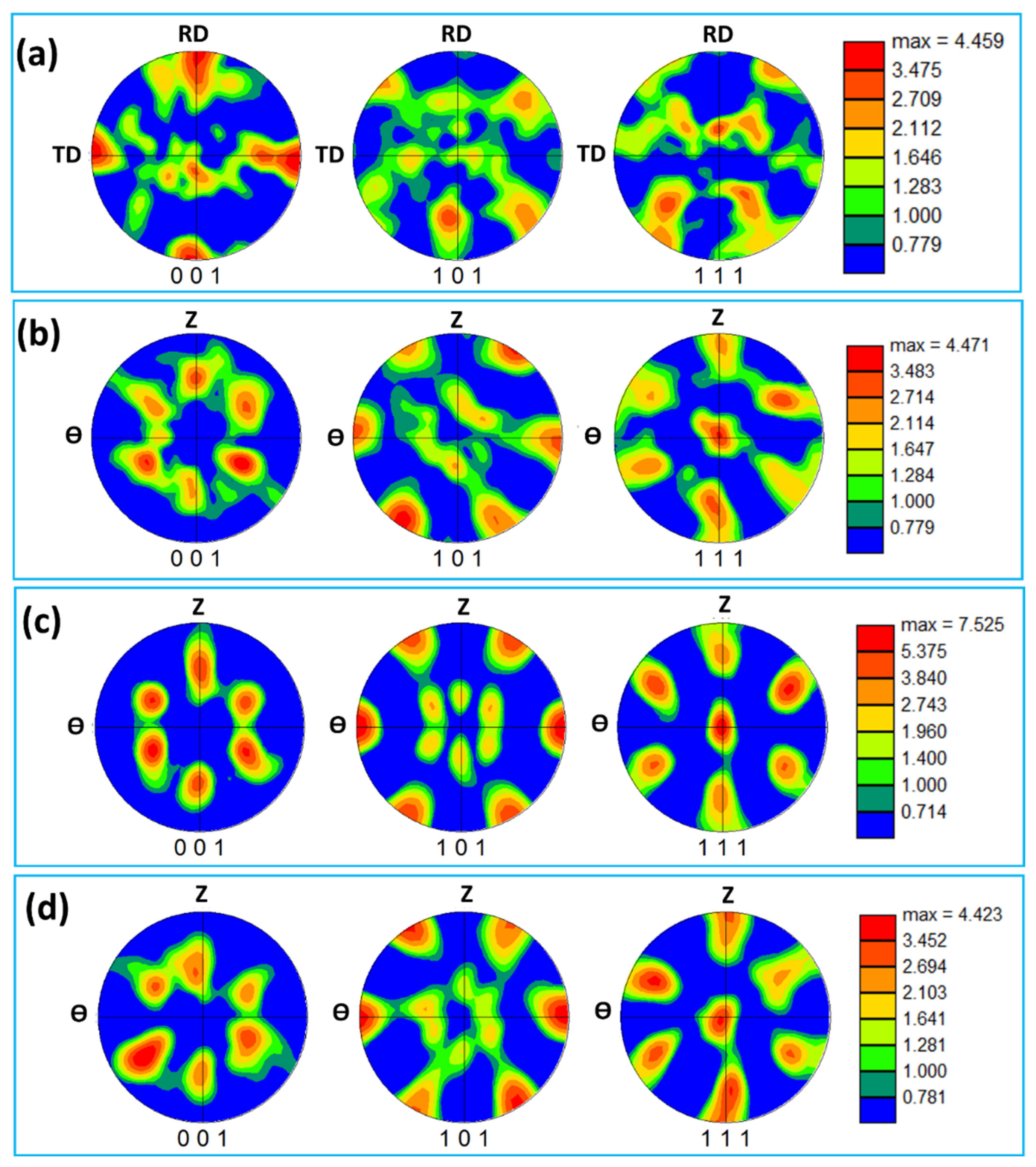
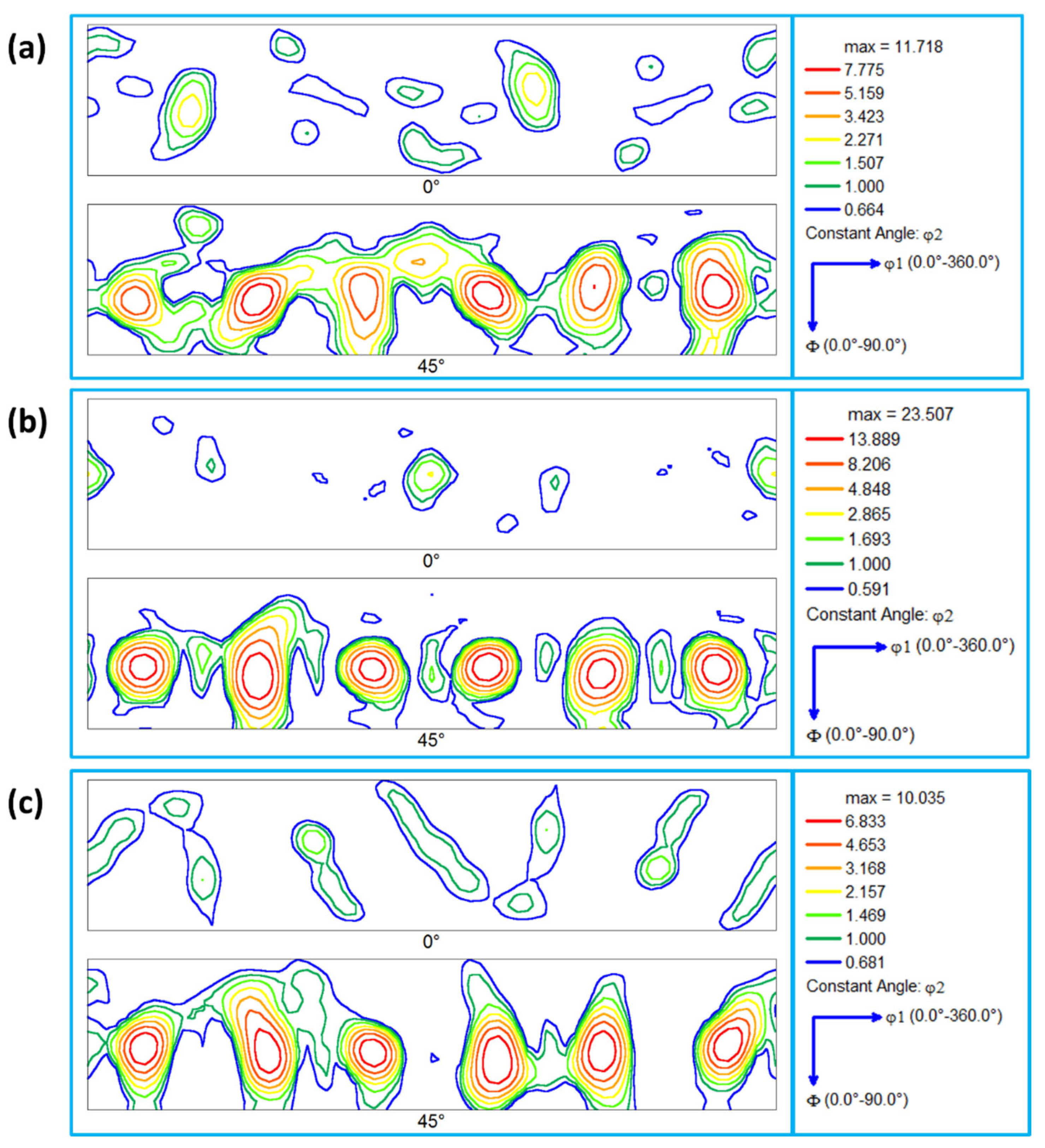
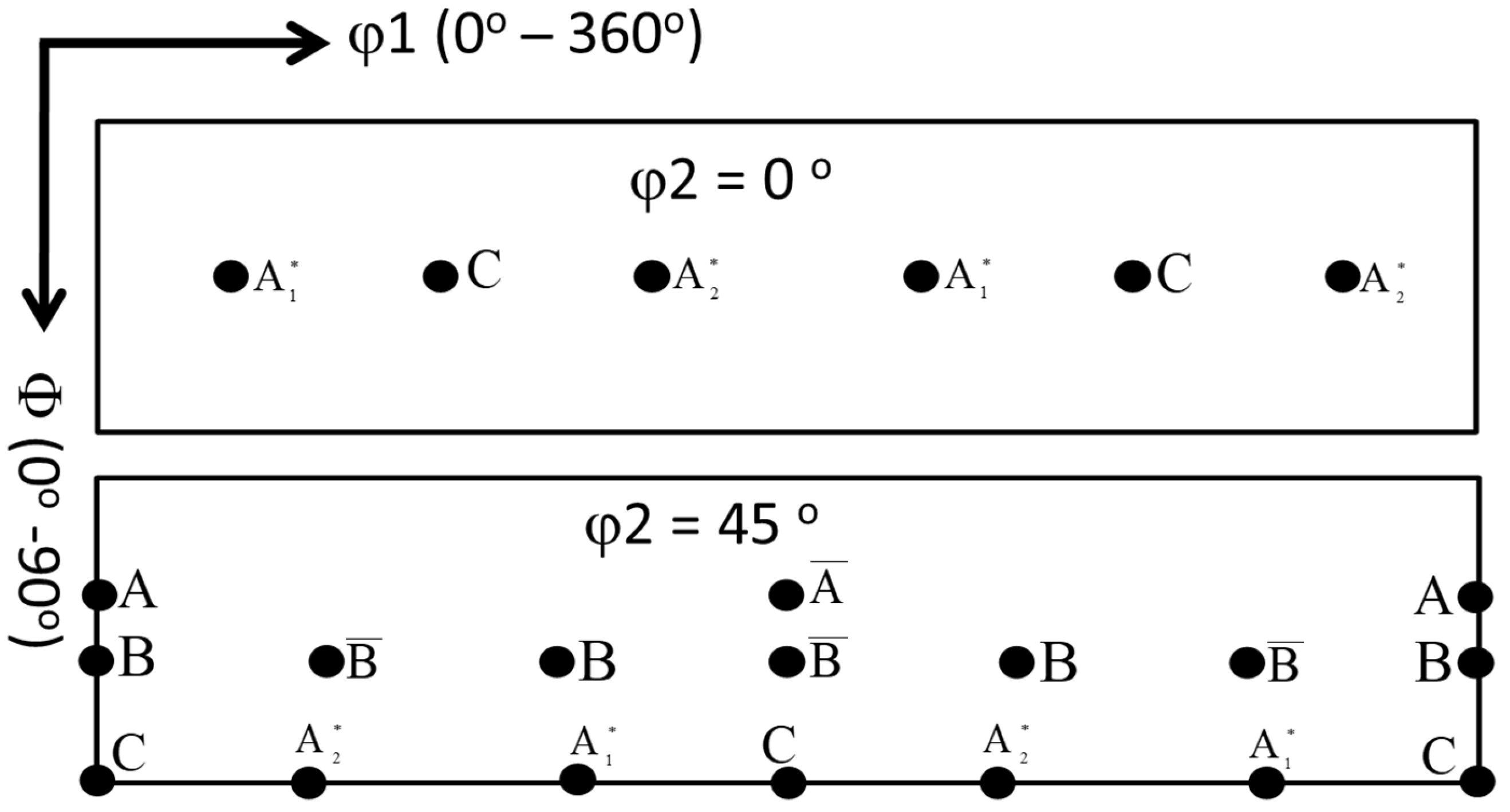
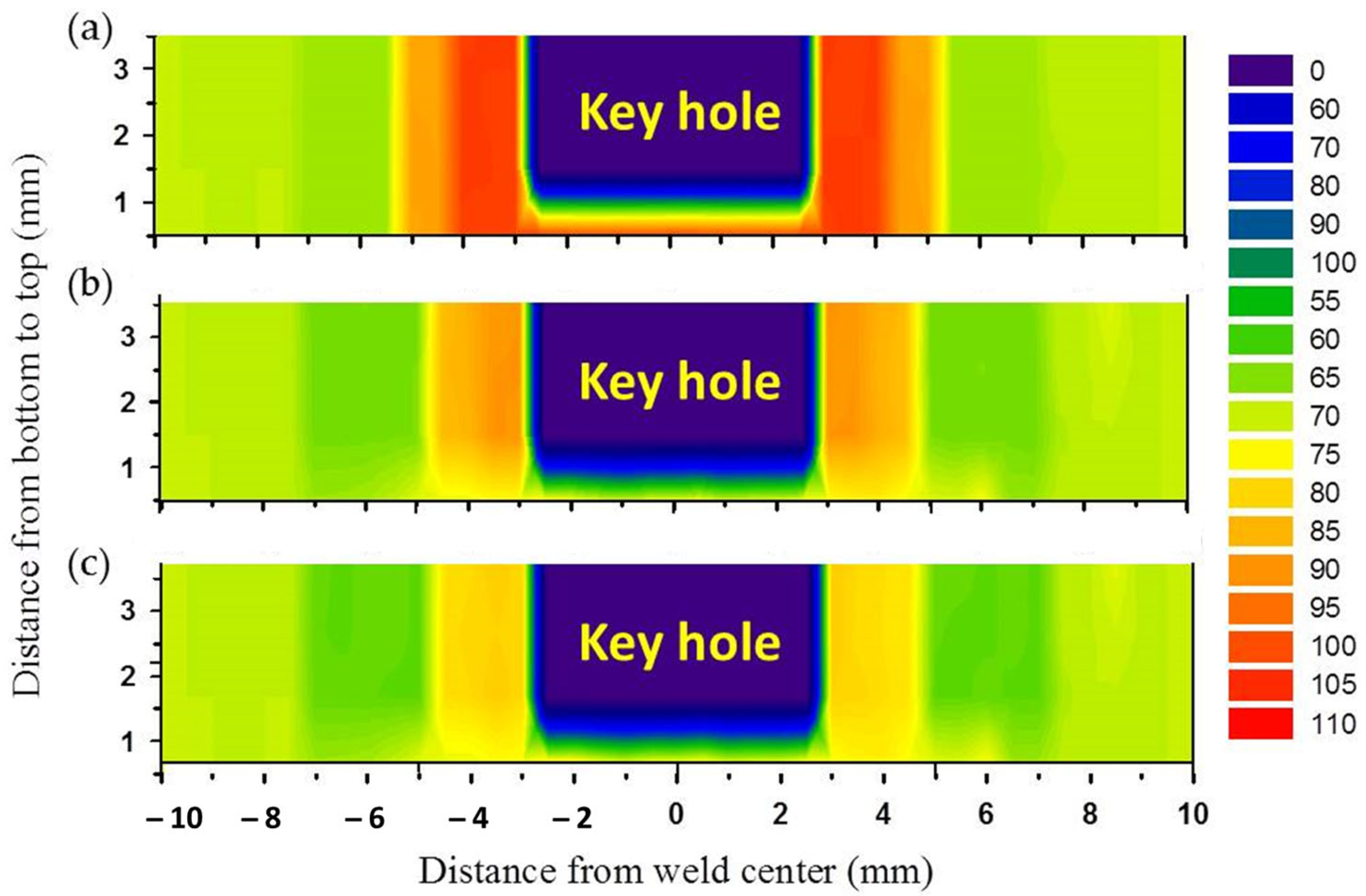
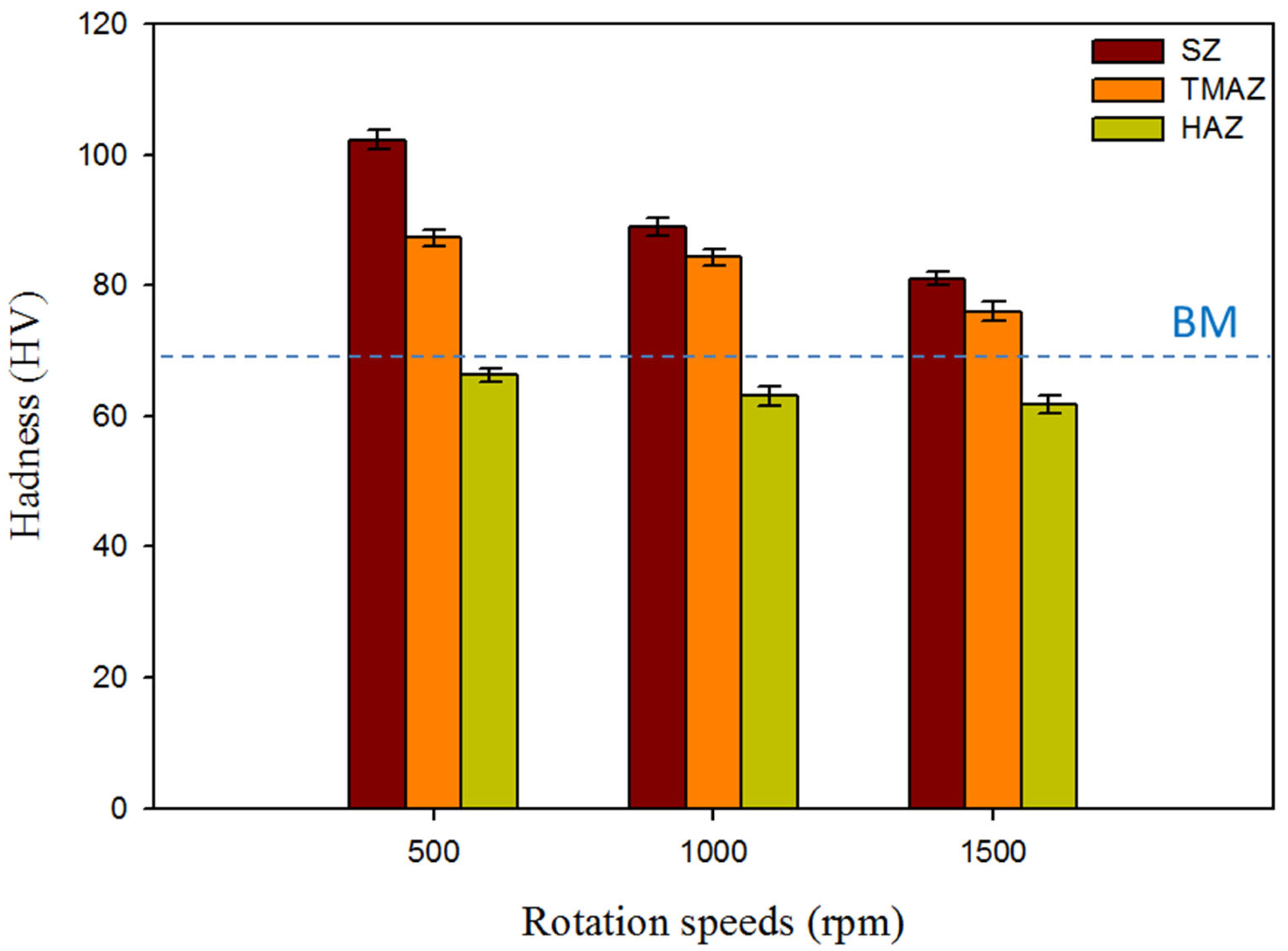
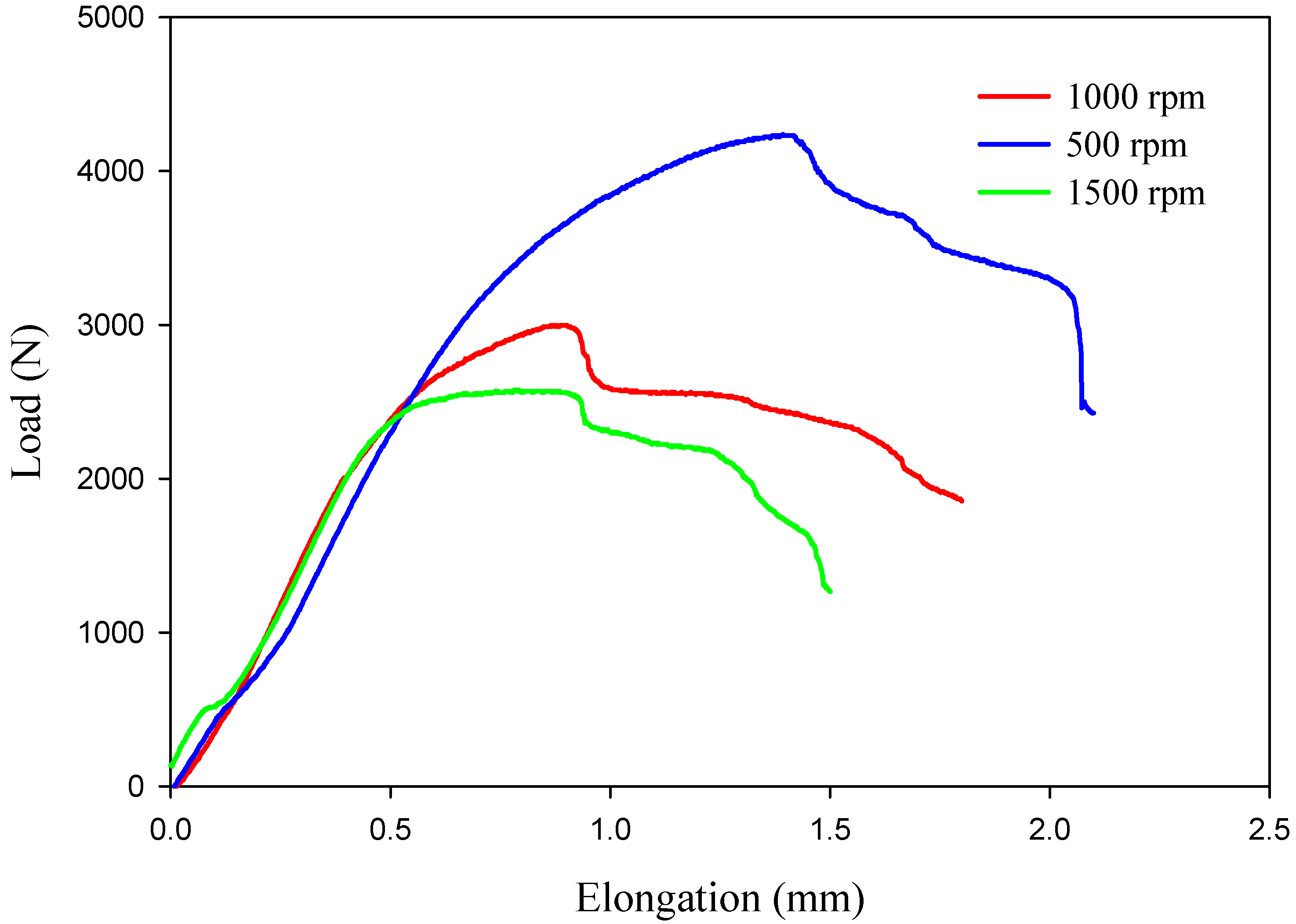
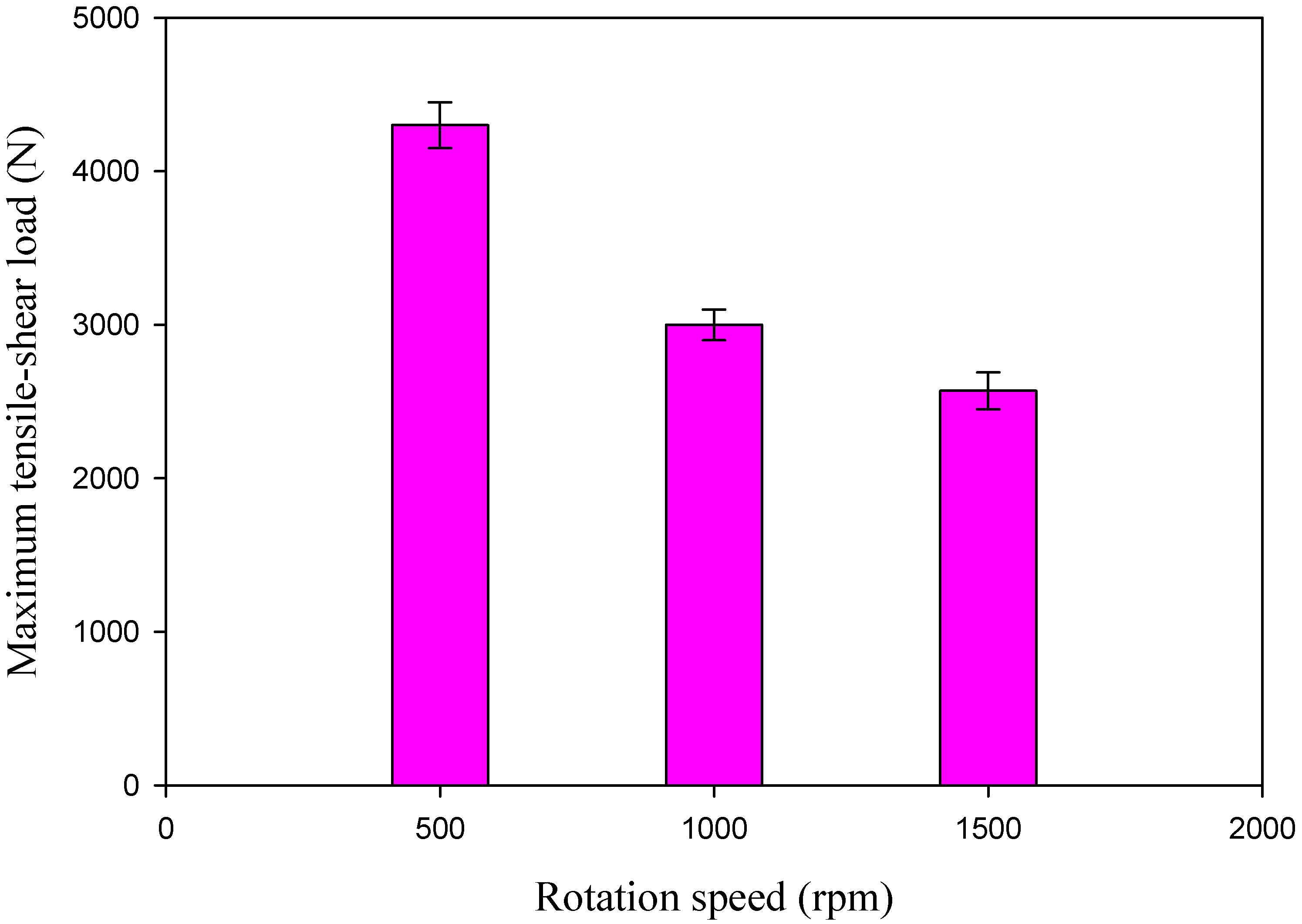
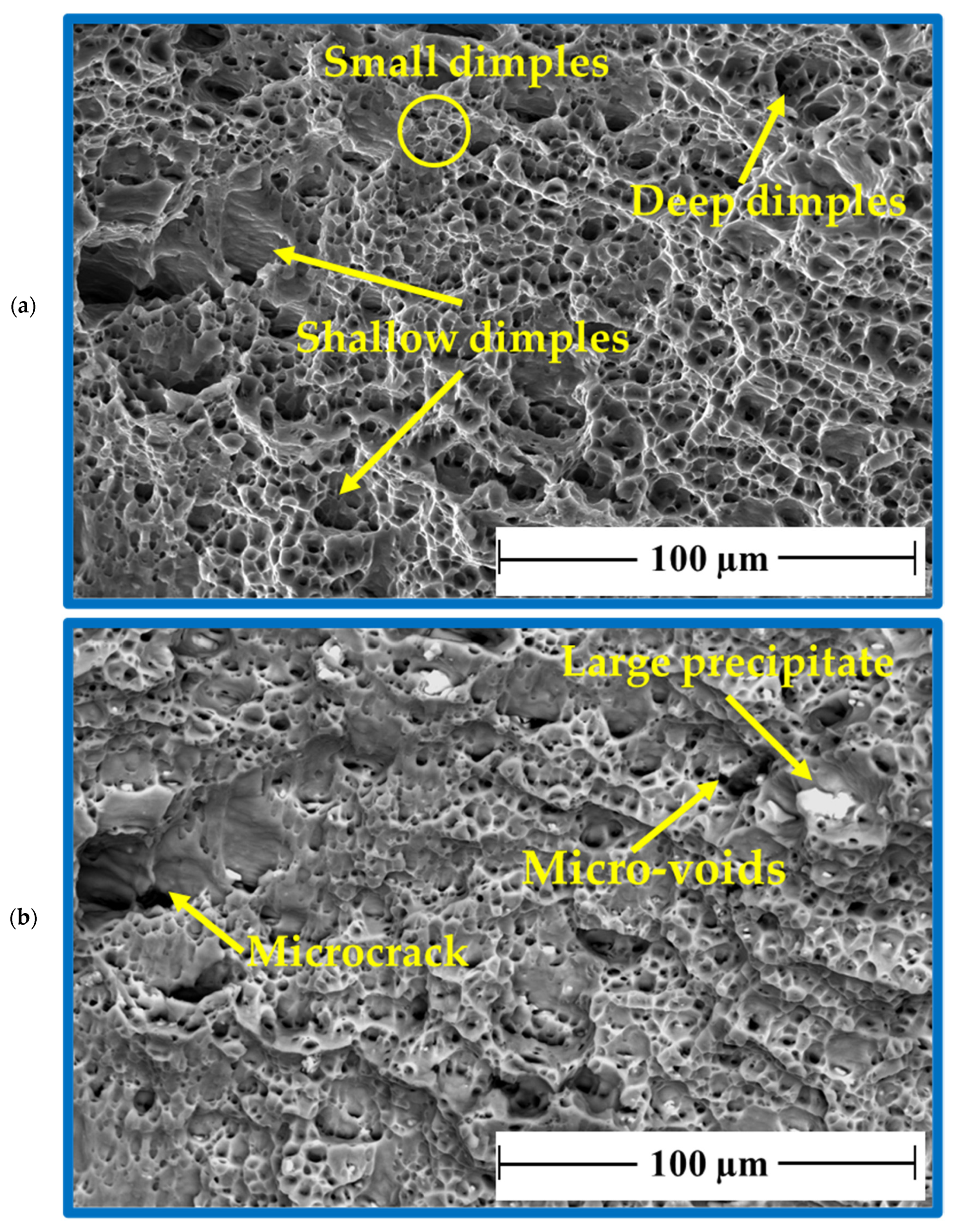
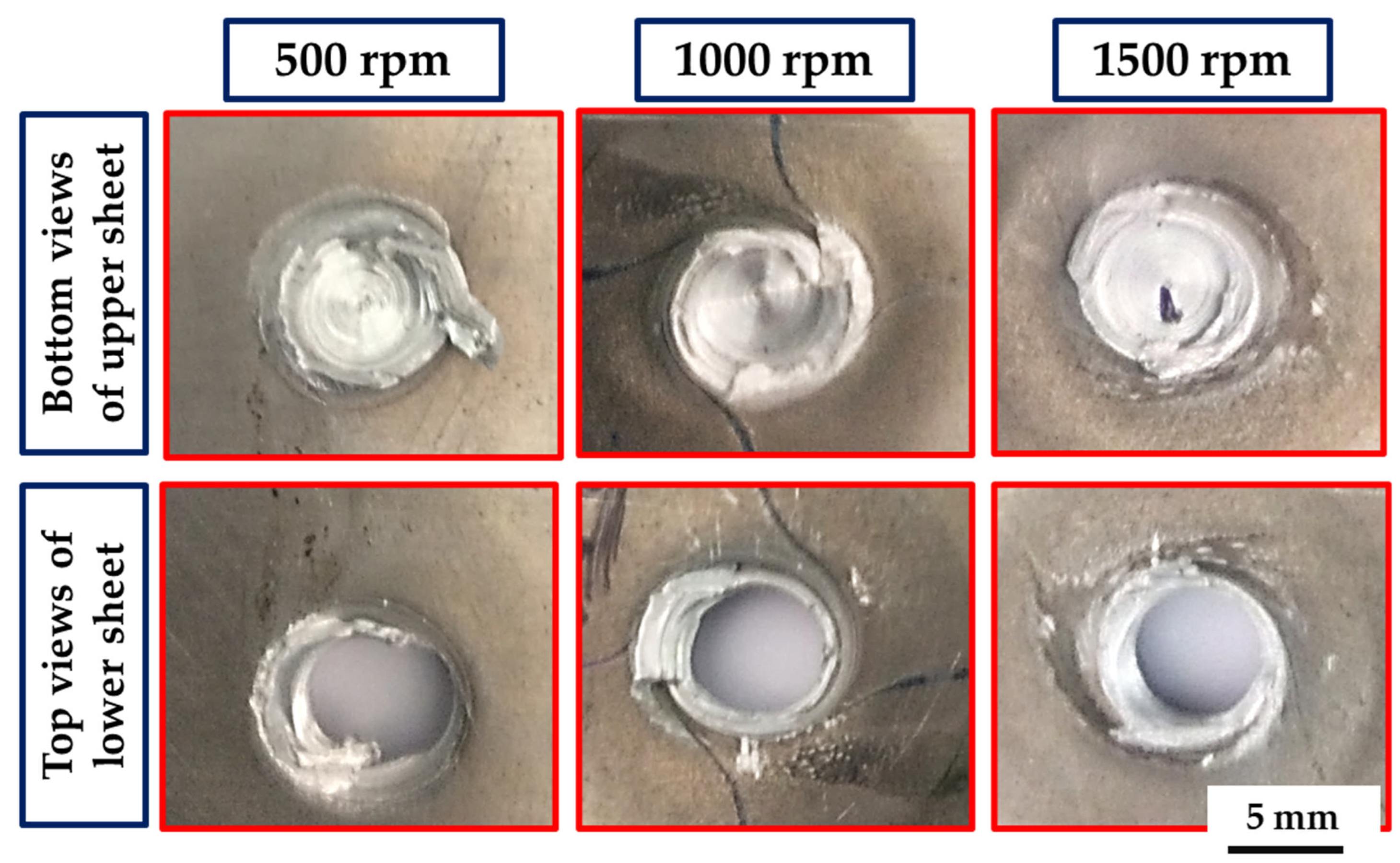

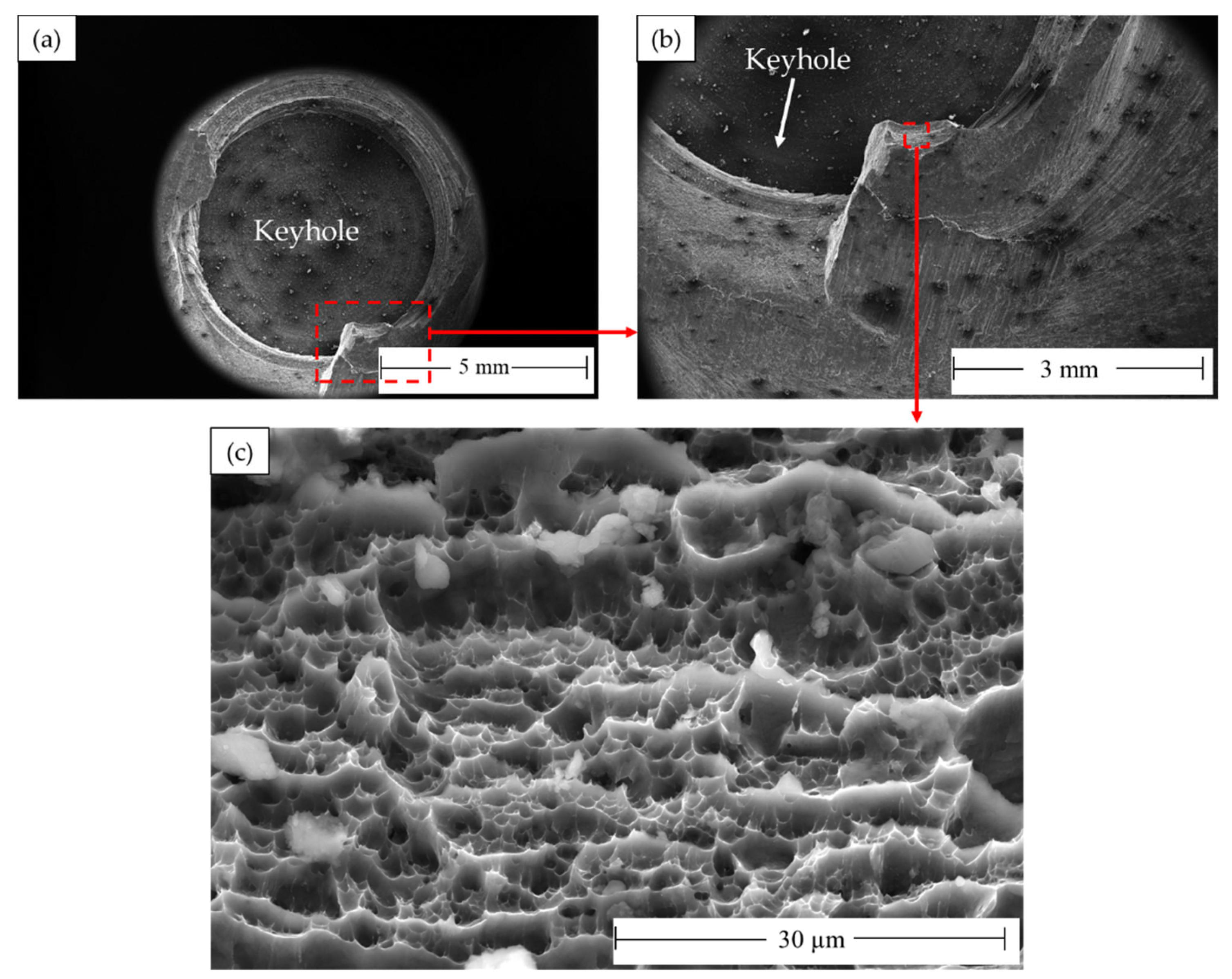
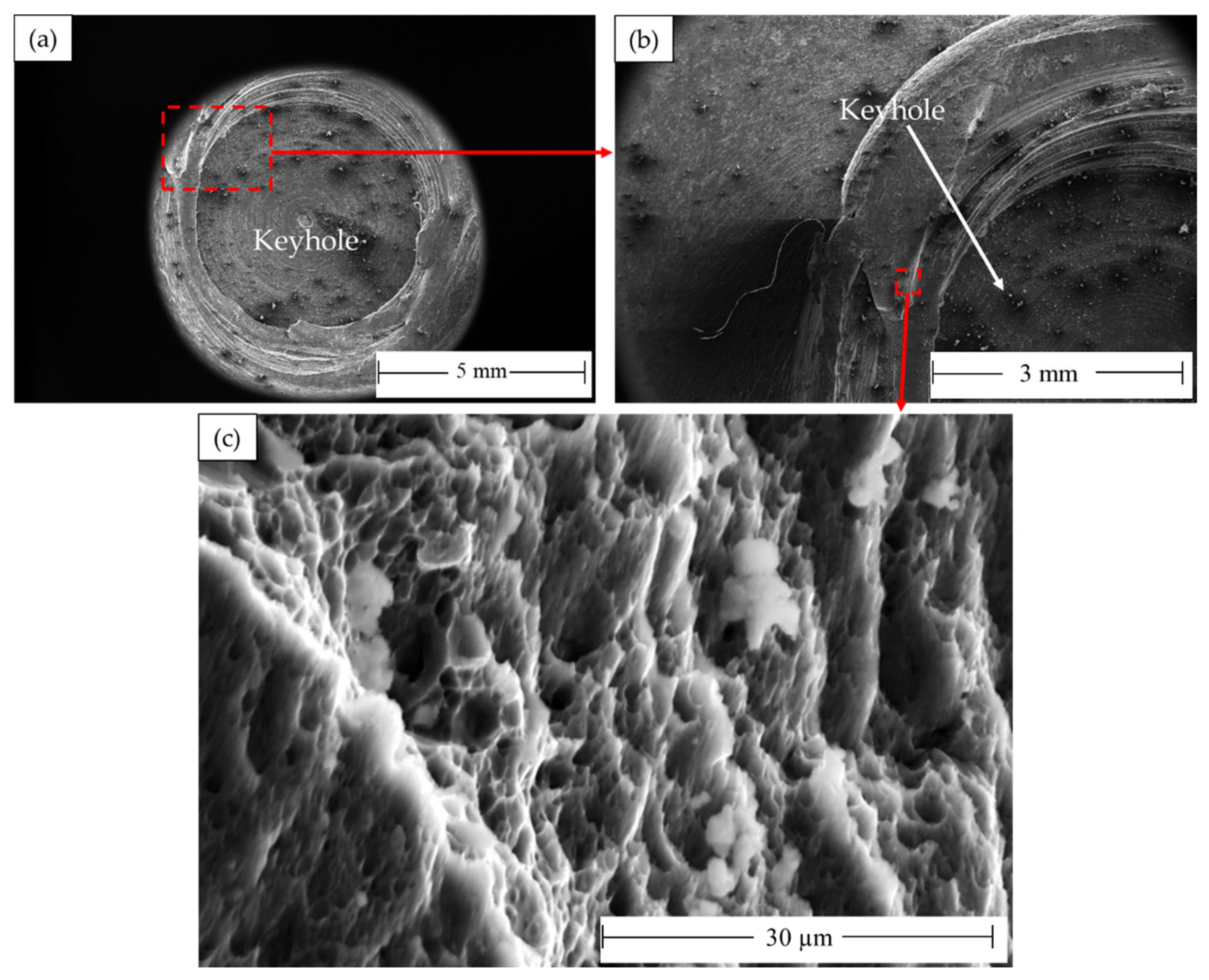
| Elements | Zn | Fe | Ti | Si | Mg | Cr | Mn | Cu | V | Al |
|---|---|---|---|---|---|---|---|---|---|---|
| (in wt. %) | 0.200 | 0.258 | 0.018 | 0.127 | 2.490 | 0.195 | 0.090 | 0.001 | 0.001 | Bal. |
| A/B Fiber | Shear Plane | Shear Direction | Euler Angles (°) | ||
|---|---|---|---|---|---|
| (hkl) | <uvw> | φ1 | Φ | φ2 | |
| 35.26/215.26 | 45 | 0/90 | |||
| 125.26 | 90 | 45 | |||
| 144.74 | 45 | 0/90 | |||
| 54.74/234.74 | 90 | 45 | |||
| 0 | 35.26 | 45 | |||
| 180 | 35.26 | 45 | |||
| B | {112} | 0/120/240 | 54.74 | 45 | |
| 60/180 | 54.74 | 45 | |||
| C | {001} | 90/270 | 45 | 0/90 | |
| 0/180 | 90 | 45 | |||
Disclaimer/Publisher’s Note: The statements, opinions and data contained in all publications are solely those of the individual author(s) and contributor(s) and not of MDPI and/or the editor(s). MDPI and/or the editor(s) disclaim responsibility for any injury to people or property resulting from any ideas, methods, instructions or products referred to in the content. |
© 2023 by the authors. Licensee MDPI, Basel, Switzerland. This article is an open access article distributed under the terms and conditions of the Creative Commons Attribution (CC BY) license (https://creativecommons.org/licenses/by/4.0/).
Share and Cite
Ahmed, M.M.Z.; El-Sayed Seleman, M.M.; Albaijan, I.; Abd El-Aty, A. Microstructure, Texture, and Mechanical Properties of Friction Stir Spot-Welded AA5052-H32: Influence of Tool Rotation Rate. Materials 2023, 16, 3423. https://doi.org/10.3390/ma16093423
Ahmed MMZ, El-Sayed Seleman MM, Albaijan I, Abd El-Aty A. Microstructure, Texture, and Mechanical Properties of Friction Stir Spot-Welded AA5052-H32: Influence of Tool Rotation Rate. Materials. 2023; 16(9):3423. https://doi.org/10.3390/ma16093423
Chicago/Turabian StyleAhmed, Mohamed M. Z., Mohamed M. El-Sayed Seleman, Ibrahim Albaijan, and Ali Abd El-Aty. 2023. "Microstructure, Texture, and Mechanical Properties of Friction Stir Spot-Welded AA5052-H32: Influence of Tool Rotation Rate" Materials 16, no. 9: 3423. https://doi.org/10.3390/ma16093423
APA StyleAhmed, M. M. Z., El-Sayed Seleman, M. M., Albaijan, I., & Abd El-Aty, A. (2023). Microstructure, Texture, and Mechanical Properties of Friction Stir Spot-Welded AA5052-H32: Influence of Tool Rotation Rate. Materials, 16(9), 3423. https://doi.org/10.3390/ma16093423









